
Two hospital ships [HSS] operated by Military Sealift Command are designed to provide emergency, on-site care for US combatant forces deployed in war or other operations. Hospital ships have two missions. First, to provide a mobile, flexible, rapidly responsive afloat medical capability to provide acute medical and surgical care in support of amphibious task forces, Marine Corps, Army, and Air Force elements, forward deployed Navy elements of the fleet and fleet activities located in areas where hostilities may be imminent. Secondly, to provide a full-service hospital asset for use by other government agencies involved in the support of disaster relief and humanitarian operations worldwide. The HSS mission in joint operations is to minimize the effects of wounds, injuries, and disease on unit effectiveness, readiness, and morale. This mission is accomplished by a proactive preventive medicine (PVNTMED) program and a phased health care system (echelons of care) that extends from actions taken at the point of wounding, injury, or illness to evacuation from a theater for treatment at a hospital in the continental United States (CONUS). One measure of this system's effectiveness is its ability to save life and limb, to reduce the disease and nonbattle injury (DNBI) rate, and to return patients to duty quickly and as far forward in the theater as possible. Another measure is the system's ability to stabilize patients for evacuation to the Communications Zone (COMMZ) or out of the theater as appropriate, within the operational evacuation policy guidelines, and with minimum delay.
Hospital ships have inpatient capabilities comparable to major medical facilities ashore. USNS Mercy (T-AH 19) and USNS Comfort (T-AH 20) each contain 12 fully-equipped operating rooms, a 1,000 bed hospital facility, radiological services, medical laboratory, a pharmacy, an optometry lab, a cat scan and two oxygen producing plants. Both vessels have a helicopter deck capable of landing large military helicopters, as well as side ports to take on patients at sea.
Both hospital ships are converted San Clemente-class super tankers. Mercy was delivered in 1986 and Comfort in 1987.
The ships are maintained in five-day reduced operating status (ROS) at East and West Coast layberths [in Baltimore, MD and San Diego CA] at their respective Sea Port of Embarkation (SPOE), and within 50 miles of their respective supporting Naval Medical Center/Hospital. In 1996 the requirements for USNS Mercy were realigned to NMC San Diego, consistent with the BRAC closure of Naval Hospital Oakland. The location and sourcing for USNS Comfort remained under close study.
In ROS-5, the ships are maintained by a small crew of civilian mariners and active duty Navy medical and support personnel at a level of readiness which will permit activation for primary mission employment in five days. Activation for other than the primary mission or for training are not subject to this five-day requirement because of the potential need to reconfigure manning, medical supplies, and ship systems to meet the unique requirements of such missions. The notional objective for non-primary mission activation is 90 days depending upon the extent of change required and the urgency of the mission. Each ship shall be activated annually for engineering sea trials for periods of approximately seven days as scheduled by the respective Naval Commander, and quarterly for engineering dock trials. Concurrent full or partial activation of the MTF, or fleet exercise participation, will be scheduled during these trials as directed by the operational or type commanders.
While the decision to employ assigned naval forces is generally reserved for the respective Unified Commander acting through and in concert with their Naval Component Commander, any decision to activate a hospital ship for other than the above routine requirements must be coordinated with the Chief of Naval Operations (CNO).
Mercy went to the Philippines in 1987 for a humanitarian mission. Both ships were used during Operation Desert Shield/Storm. Comfort twice operated during 1994 � once for Operation Sea Signal's Cuban/Haitian migrant interdiction operations, and a second time supporting US forces and agencies involved in Haiti and Operation Uphold Democracy. The hospital ship USNS Mercy was activated during Kernel Blitz 97, a major amphibious exercise in Southern California and waters offshore between 20 June 1997 and 03 July 1997. More than 200 Sailors and Marines were cosmetically prepared to play the role of casualties who were treated by active duty and reserve medical personnel during the medical exercise over a four-day period. Casualties were treated through five echelons of medical care from initial treatment in the field to medical facilities aboard amphibious ships to more extensive treatment on the hospital ship and, finally, to fleet hospital facilities ashore. Casualties were evacuated by National Guard and Coast Guard Medevac helicopters. In 1998, Comfort participated in exercise Baltic Challenge '98, a multinational exercise involving 11 European nations and the United States to improve cooperation in peace support operations.
Specifications | |
| Builder | National Steel and Shipbuilding Co., San Diego, Calif. |
| Power Plant | 2 GE turbines; two boilers; 24,500 hp (18.3MW); one shaft |
| Length | 894 feet (272.6 meters) |
| Beam | Extreme Beam: 106 ft Waterline Beam: 106 ft |
| Draft | 33 feet |
| Displacement | Light Displacement: 24712 tons Full Displacement: 69360 tons Dead Weight: 44648 tons |
| Speed | 17.5 knots (20.13 mph) |
| Crew | 63 civilian mariners 956 Naval medical staff 258 Naval support staff |
| Aircraft | |
Ships | ||||||
| Name | Number | Builder | Homeport | Ordered | Commissioned | Decommissioned |
| USNS Mercy | T-AH 19 | NASSCO | Oakland | 29 Jun 1973 | 01 Feb 1976 | |
| USNS Comfort | T-AH 20 | NASSCO | Baltimore | 01 Jun 1973 | 01 Feb 1976 | |
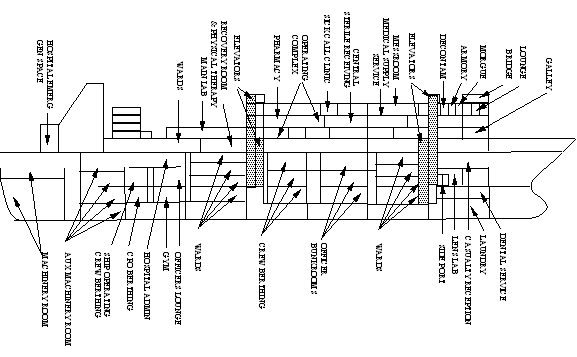
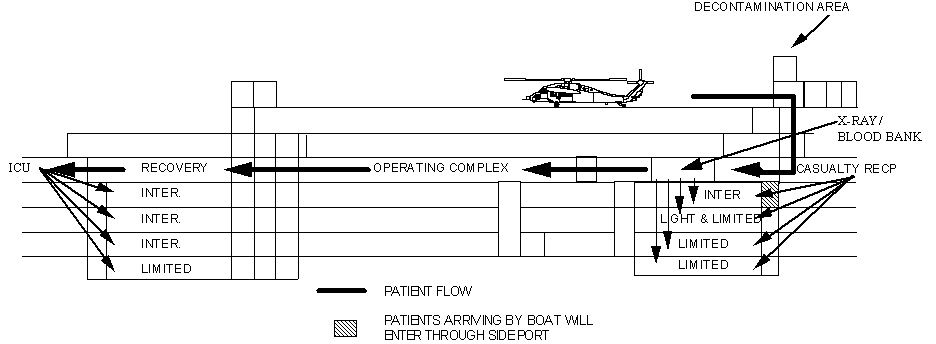
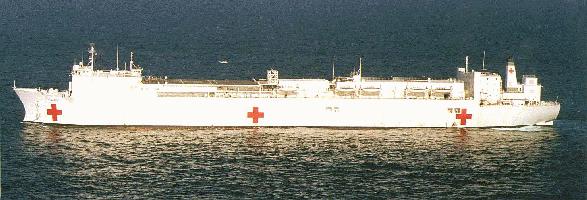

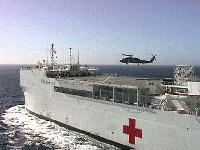
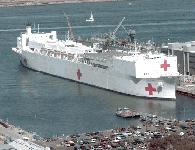
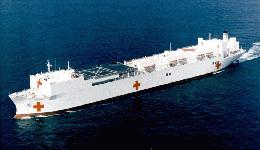
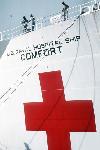
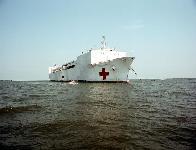
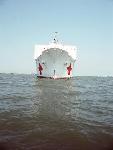

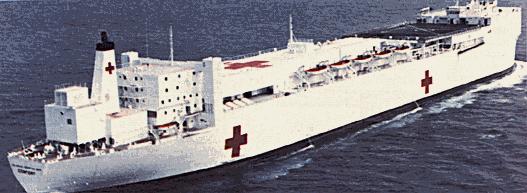






No comments:
Post a Comment